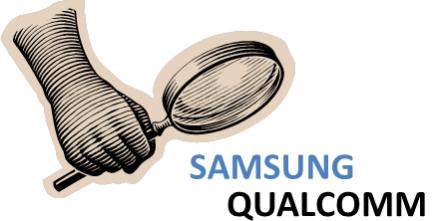 I recently blogged about the actions filed by Tela Innovations at both the US International Trade Commission (USITC) and in federal district court. Those actions allege that five mobile phone manufacturers -HTC, LG, Motorola Mobility, Pantech, and Nokia – were importing handsets into the US which infringed on seven of Tela’s patents. After posting that blog there were a few follow-up comments and questions on that SemiWiki post which caused me to take a deeper look. This blog is to follow-up on those comments in two areas – “patent trolls” and the bigger story, who really may have broken those patents.
I recently blogged about the actions filed by Tela Innovations at both the US International Trade Commission (USITC) and in federal district court. Those actions allege that five mobile phone manufacturers -HTC, LG, Motorola Mobility, Pantech, and Nokia – were importing handsets into the US which infringed on seven of Tela’s patents. After posting that blog there were a few follow-up comments and questions on that SemiWiki post which caused me to take a deeper look. This blog is to follow-up on those comments in two areas – “patent trolls” and the bigger story, who really may have broken those patents.
There have been allegations that Tela is a “patent troll”. Patent trolls are companies that typically collect patents at auction from bankrupt companies and then try to profit from owning the patents, rather than using them in their own products. Tela is most definitely not a patent troll. I believe Tela has raised upwards of $20M over at least three rounds of funding. They have also spent years developing their own products, services, and IP portfolio with only one noticeable small (less than $5M) acquisition, Blaze Semiconductor. Tela’s engineers include several former layout and circuit design experts (several that worked at Artisan Components) and some lithography experts (with backgrounds such as KLA-Tencor). Patent trolls do not hire the top engineers, just accountants and lawyers, so we can stop discussing this topic as Tela is clearly not a patent troll.
This topic got more interesting to me when I looked more deeply into the documents filed with the USITC. All of the mobile phone products named in the complaint contain a Samsung package which appears to contain a Qualcomm Snapdragon design. There are more than 500 separate documents already on file in the case and I do not plan to read them all. But as far as I can tell so far, all of the alleged patent violations appear inside the Qualcomm design. Bear in mind that the patents are layout related – new techniques to layout circuits in the most advanced semiconductor manufacturing processes. So, the question is “Who created those layouts?”
Before you jump to the conclusion that it must have been Qualcomm consider two things: (1) the designs appear to have been implemented using a standard cell library approach; and (2) Qualcomm is an investor in Tela. If indeed Qualcomm designed the layouts violating Tela’s patents, wouldn’t you like to be a fly on the wall for the next several Tela board meetings? Qualcomm’s level of investment in Tela is not so high that it has a seat on the board. And the board is formidable including EDA legends Don L. Lucas, Ray Bingham, and Jim Hogan; Spansion’s CEO John Kispert; and two former Artisan executives Scott Becker and Dhrumil Gandhi. But if the violations are in a standard cell library design used in the Samsung manufactured part – where did the standard cell library come from?
The documents filed show a very modern looking layout techniques like those I expect to see at 22nm and below. Samsung lists a 20nmHKMG process on their foundry website. Tela has been developing libraries on this process node for a while and made a public statement on this topic last summer. But, I have not yet been able to determine who provided the library to Qualcomm or if Qualcomm developed it on their own. If the USITC upholds Tela’s complaint, I would expect that these details will eventually come out.
In another interesting twist, according to a response by HTC’s lawyers, the mobile phones in question constitute all of the available Windows Phone 8 models sold in the US. In fact, both HTC and Nokia have asked the USITC to consider the impact on the Windows 8 launch as a viable third player in the mobile phone market and because their products are used for public health and safety. Hard to imagine that these should be factors as any phone, even one several generations old, can contribute to public health and safety. And I doubt AMD ever got anywhere by saying it should be able to violate Intel patents so we could have a second player in the PC microprocessor market. They also say the Qualcomm part is a small part of the overall phone – I bet Qualcomm loved that statement. The microprocessor chip takes a small area of my PC’s footprint too – so what? How can you claim that this makes its contribution unimportant? This is just the beginning of the responses though. This is very serious stuff, but I cannot help but think it will continue to provide a source of entertainment, kind of like a who-done-it mystery, for months to come.
Share this post via:







TSMC N3 Process Technology Wiki